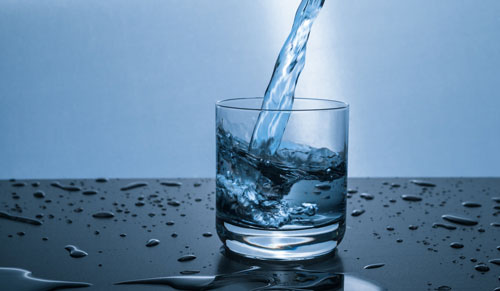
Clean water access is essential for health, but tap water often harbors contaminants requiring filtration. Under sink systems provide an easy filtration solution – delivering purified water directly from the kitchen faucet. This guide covers their components, benefits, proper installation and maintenance for securing your household’s health.
The Importance of Clean Water
Water enables life, transporting nutrients in blood, aiding digestion, regulating temperature and removing waste. However, these functions only occur properly with access to contaminant-free potable water. As clean water resources shrink globally, under sink and other filtration becomes vital for health and daily functioning. Even mild dehydration causes headaches, fatigue, confusion while chronic contamination from heavy metals or bacteria fosters serious disease. Secure home access to purified water should be a top health investment priority.
Common Water Contaminants
Tap water containing heavy metals like lead/mercury, bacteria like E.Coli/Salmonella or nitrates/chemical pollutants risks gastrointestinal, neurological, and organ disorders. Children/infants also face impaired development from ingesting these invisible dangers. Verify your tap water quality with local utilities or independent tests to determine your potential exposure from local treatment facilities and home plumbing components.
Impact of Polluted Water
Over time, ingesting contaminated water can also lead to long-term health problems beyond immediate sickness. For example, heavy metal consumption may result in neurological disorders, while nitrate pollution can cause “blue baby syndrome,” reducing an infant’s ability to carry oxygen in the blood. Safeguarding clean water access is therefore critical for longevity and wellbeing.
Superior Under Sink Filtration
Multi-stage under sink systems provide the most complete tap water filtration using integrated filter technologies:
Fine mesh screens trap particulate matter like sediment and rust while dense activated carbon beds adsorb dissolved heavy metals, pesticides, prescription drugs and stubborn chlorine compounds that centralized treatment misses.
Advanced systems take protection further with ultraviolet light destroying viruses, bacteria and cysts unaffected by media filtration. Some also replenish lost minerals through remineralization filters.
Together, these technologies reduce up to 99% of common tap water contaminants for clean, safe water straight from the kitchen tap. Under sink filtration enhances household health protection through superior contaminant reduction conveniently out of sight.
If you’re interested in this technology you can read about it at Filtap.
Introduction to Under Sink Filters
One such effective water filtration solution is under sink filters. As inferred from the name, these are installed under your kitchen sink. The system connects directly to your cold-water pipe and provides filtered water at the turn of your existing faucet. You won’t need a separate tap or dispenser as with some other filter systems.
Under sink filters are very effective at reducing contaminants thanks to their superior filtration technology compared to standard countertop or pitcher filters.
How Under Sink Filters Work
A typical under sink filter uses a simple yet effective mechanism to purify the water. When you open the tap, water from the pipe enters the filter system. The sediment pre-filter traps all larger particles and particulate matter. This treated water then passes through activated carbon filters where harmful chemicals, chlorine, pesticides, and heavy metals are removed.
In some configurations with additional stages, at this point beneficial minerals like calcium and magnesium might be added to the water or UV light may treat it for any remaining bacteria or viruses. Thus, ensuring that by the time it reaches your glass or pot, it is pure and healthy.
Benefits of Under Sink Filters
Under sink water filters provide many advantages that make them an attractive choice, especially their ability to instantly supply purified water directly from the tap. Being directly connected to the cold-water pipe, they deliver purified water instantly whenever you open the tap.
Unlike countertop or pitcher filters, under sink filters do not clutter your kitchen or take up counter space. They lie concealed under the sink, keeping your kitchen aesthetics unaffected. Besides, their high filtration capacity ensures reduced contaminants and better tasting water compared to traditional filters.
Possible Disadvantages
As with any other product, under sink filters come with potential downsides too. Installation can be trickier compared to a simple pitcher or countertop filter and might require a plumber’s help. They may also have higher initial costs due to sophisticated filtration technology, although this largely gets offset in the long run by negligible replacement costs.
Furthermore, they only purify the water from one faucet – if you need pure water in bathrooms or other faucets, separate units would be required.
Installing Under Sink Filters
The installation procedure for an under sink filter involves multiple steps such as shutting off the water supply, installing the filter assembly and tubing, connecting it to the cold-water line and finally testing it. This might appear difficult but many systems come with comprehensive instructions that guide you step by step through the process.
If you’re not confident about DIY tasks, having a professional plumber do the job would be best. It ensures proper setup and longer-lasting, issue-free operation of the system.
Comparing Different Types of Filters
When it comes to water filters, various designs cater to different needs. Some popular ones include countertop filters, pitcher filters, whole house filters, and under sink filters as seen here. While countertop and pitcher models have low upfront costs and easy installation, they lack in filtration efficiency and capacity compared to under sink and whole house filters.
Under sink filters strike a balance by delivering high-quality filtered water without requiring significant space or invasive installation like whole house systems.
Cost Analysis of Filter Systems
The cost of water filter systems can vary significantly. Initial investment for under sink filters may be higher than countertop or pitcher models due to better filtration technology and larger capacity. However, less frequent change of cartridges and improved durability make them economical in the long term.
While whole house filters offer superior performance, they demand higher setup costs and maintenance expenses making under sink filters a reasonable choice for most people.
Sustainability with Under Sink Filters
Adopting an under sink water filter is a significant step towards sustainability. By reducing reliance on bottled water, you contribute to lesser plastic waste generation and reduced carbon footprint associated with its production and transportation.
Besides, since filters primarily comprise carbon which is a renewable resource, they are an environmentally friendly choice.
Other Healthful Tips Beyond Filtration
While under sink filters deliver clean, healthy drinking water, individuals can take other positive steps to nurture wellbeing – washing hands frequently, eating nutritious whole foods, staying active, getting enough sleep, and tending to hygiene and self-care needs. Holistic health requires care across all facets of lifestyle, but consistent access to contaminant-free water provides a strong foundation. The time to start improving health is now, with each small positive change adding up to significant results over time.
Total Wellness Conclusion
Securing health with under sink filters is a strategic move. It not only guarantees 24/7 access to purified and clean water but also contributes to sustainability by reducing plastic consumption. With careful consideration of your requirements and the quality of filter systems available, you can ensure finding the right fit that meets your health goals while being economical in the long run. However, complementing water filtration with other wholesome habits will further support the journey towards holistic health and wellness.






